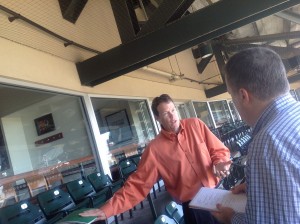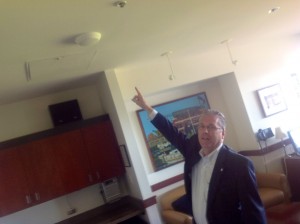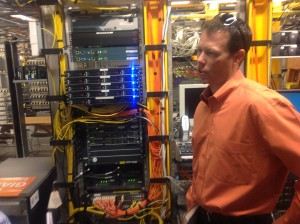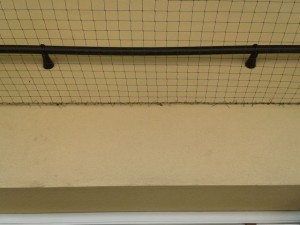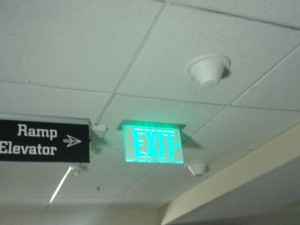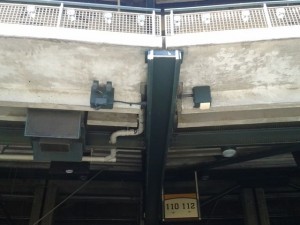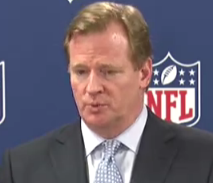Welcome to “Wednesday Wi-Fi Whispers,” our clever title for a new rumors and news snippets column debuting… right about now. The idea here is to keep this a bit more informal than our regular, solid news coverage, to give a home to those whispers of things we hear that might be happening in the world of stadium Wi-Fi. First up is the yet-to-come formal announcement of the stadium-technology partnership between the San Francisco 49ers and networking gear supplier Brocade.
Brocade and the Niners: It’s all about 802.11ac
When the Niners finally broke ground on their new stadium that is being built in Silicon Valley (Santa Clara, just north of San Jose) back in April, team president Jed York let loose with a tweet that all but announced which Silicon Valley company would get the prized stadium-technology deal. In a bit of a surprise, it wasn’t Cisco Systems, the 900-pound gorilla of networking, whose main corporate campus is seriously “just down the block” from the Niners’ new digs.
I want to welcome #Brocade as the Official Networking Partner of the San Francisco 49ers. Thanks for being the 1st new stadium partner!
— Jed York (@JedYork) April 20, 2012
If you don’t know Brocade that just means you don’t follow networking technology. Having covered this company in my previous tech-writing lives I was surprised since I thought of Brocade as a core/backbone gear provider, and not a company that had products for things like Wi-Fi access. Silly me. With not a lot of digging I discovered that Brocade had signed a partnership with Motorola several years back and now in fact was heavily into Wi-Fi access points, the key technology in any stadium build.
And though Brocade hasn’t yet commented officially on the Niners deal — a formal press conference is apparently just around the corner — we did speak recently with David Hunt, a senior technical marketing engineer at Brocade, who said that among other innovations you can look to see Wi-Fi gear with the new 802.11ac protocol (which provides much higher throughput than current technology) when the Niners’ stadium is ready. Hunt said that Brocade is already assuming that data loads when the new stadium opens in 2014 will eclipse what is being used now, so look for all kinds of new gear and smart-networking designs to ensure that what will probably be the world’s most wired crowds will stay wirelessly connected.
Cisco, which has an entire building at its nearby HQ that is decked out like a sports bar (as part of its Connected Stadium marketing push) must be smarting a bit to have lost the Niners deal to its smaller neighbor Brocade, whose HQ is also just around the corner from the new site. But in the end Cisco will probably sign up a lot more stadium customers, since Brocade is likely to do the Niners’ arena as kind of a “see what we can do” deal rather than part of a big strategy to go after stadiums. Still, it’s not a bad place to showcase your stuff if you are trying to sell to enterprise technology buyers. Those people spend a lot of time — and money — in Silicon Valley already. Stay tuned to MSR for more when the formal announcement is made. The wait is probably not gonna be long.
Will Time Warner Cable surf from the beaches to the stadiums?
In a cool side-gig thing we did last week we got to hear about how Time Warner Cable has brought Wi-Fi to the beaches in Southern California — according to Rob Cerbone, VP of wireless product management at TWC, the beach Wi-Fi uses solar-powered ACs mounted on lifeguard stands to bring web surfing to the shore.
(By the way, I am shameless about seeing how many times I can milk that web surfing/real surfing line. Twice now, and I’m probably not done yet.)
As we cornered Cerbone after his panel talk we asked the obvious MSR question — if you could bring Wi-Fi to the beach, when can we expect to see TWC bringing Wi-Fi to stadiums? Seems like a natural fit, given the content TWC likes to send over its cables. The official word from Cerbone: No comment. But the body language seemed to say, you might hear something soon. Since TWC plans to have more than 10,000 wireless access points deployed in LA by the end of the year — should be interesting to see where some of them end up. There are a lot of beaches, but more malls… and stadiums.
SEAT Conference — who’s going?
Here’s a free plug for the SEAT 2012 conference, which takes place in Boston the first week of August. With this agenda it looks like a place for MSR and our industry leading stadium Wi-Fi coverage and analysis. We are working on finding a way to get there… if we can, we will see you there.
Is your stadium unwired? Let us know!
Now is the time on Sprockets when we dance. No! Now is the time on Wednesday Whispers when we profile a stadium that has Wi-Fi… but since this is the first time out there are no profiles and we are sad. Is your place “unwired?” Drop us a line and let us know. It could be the start of a grand tour… MSR visits the country’s unwired stadiums! Preferably, with a hot dog and beer in hand. Until next week… stay unwired, my friends.
